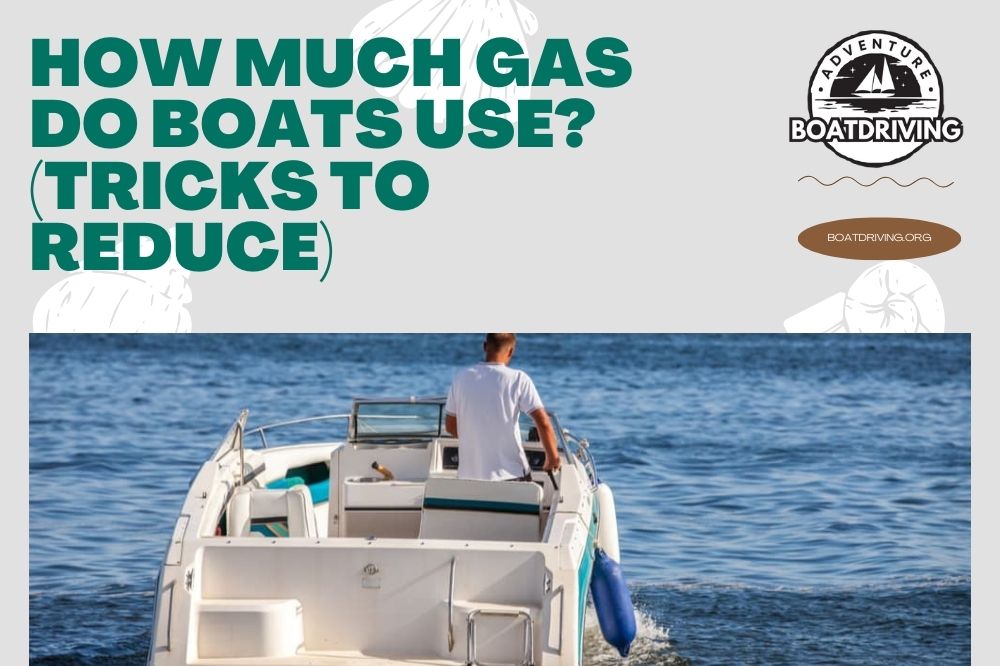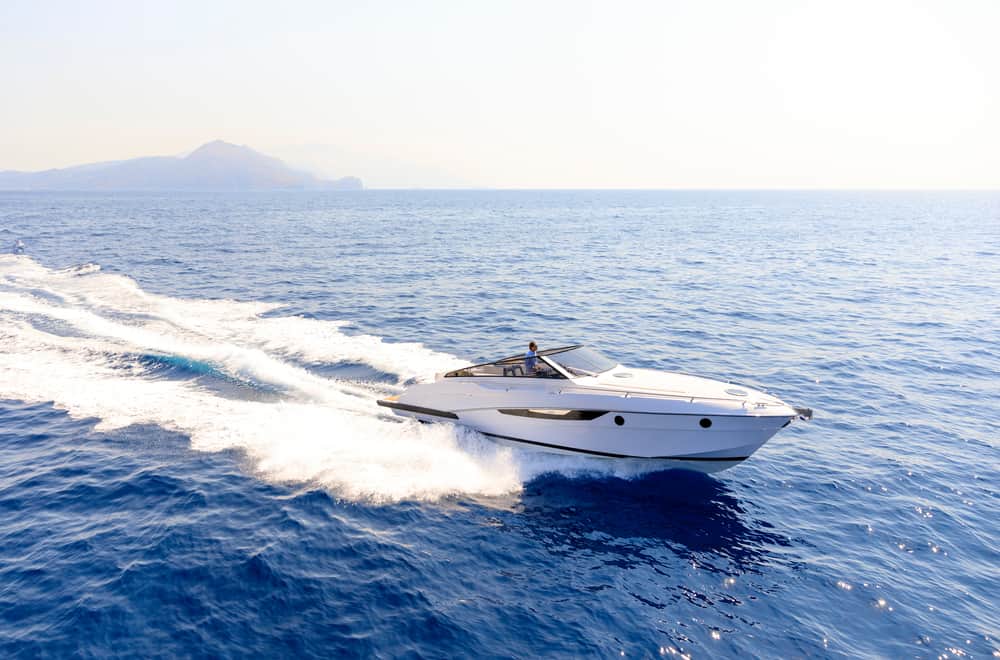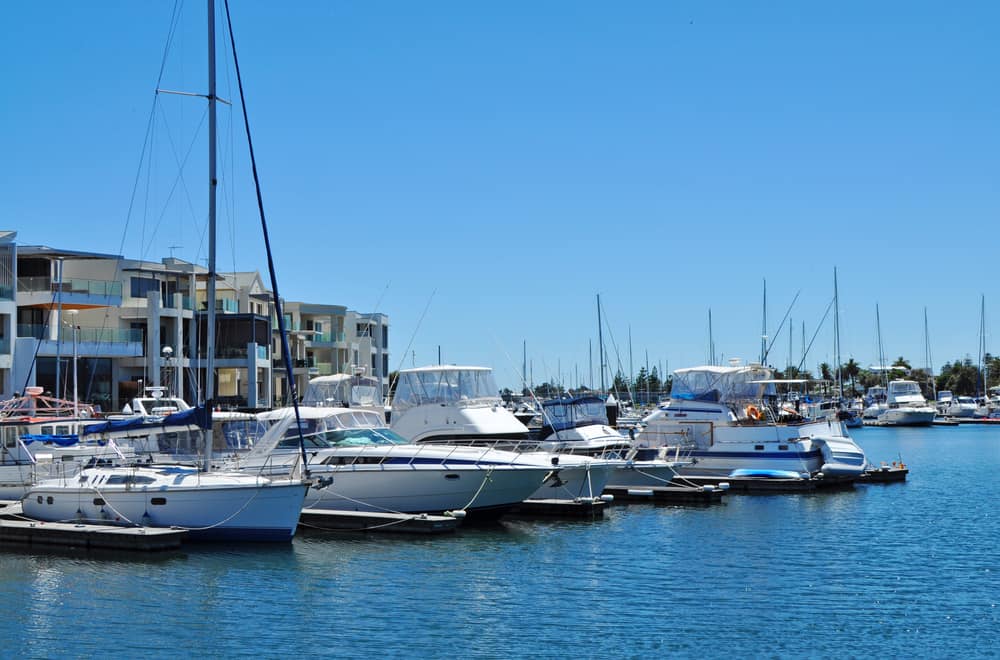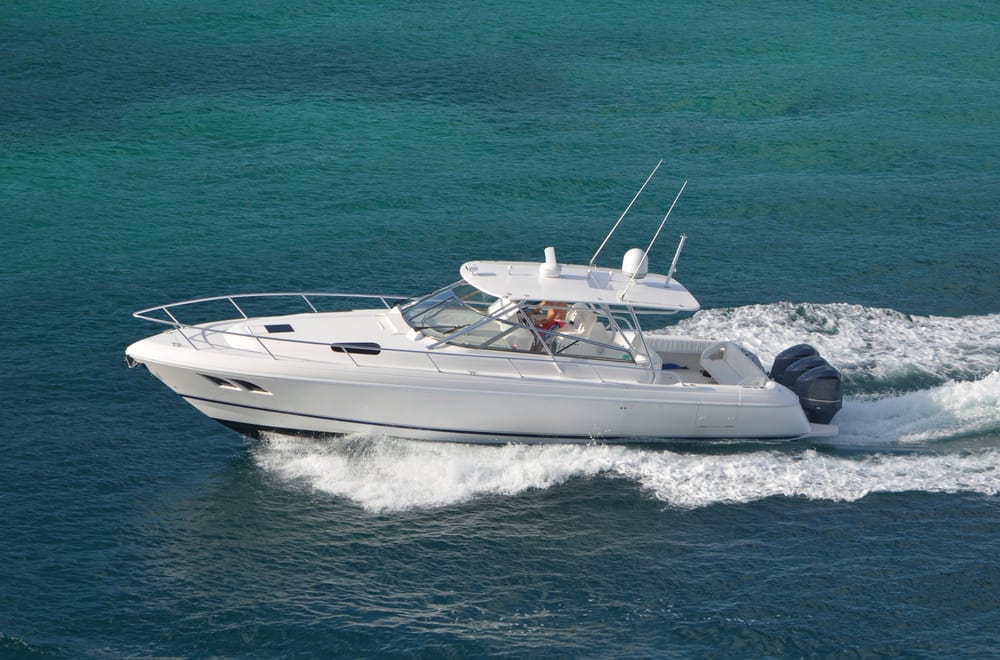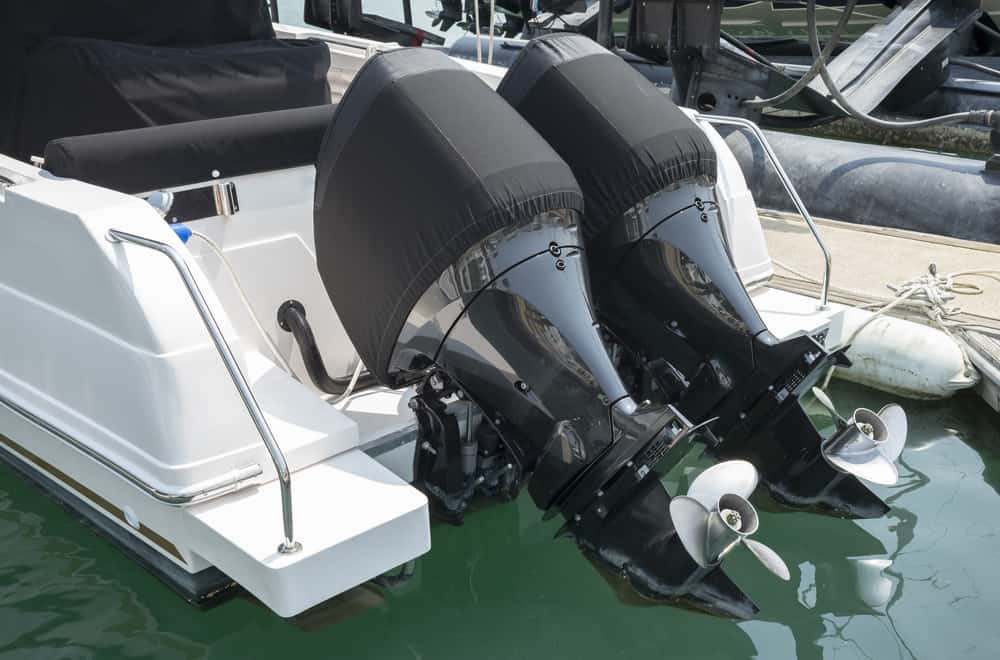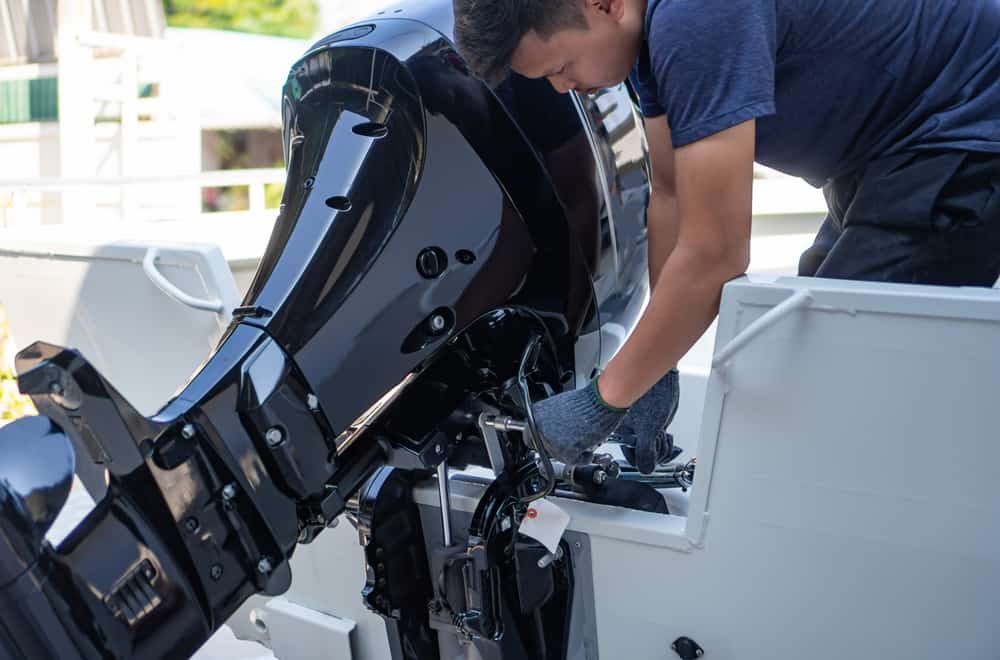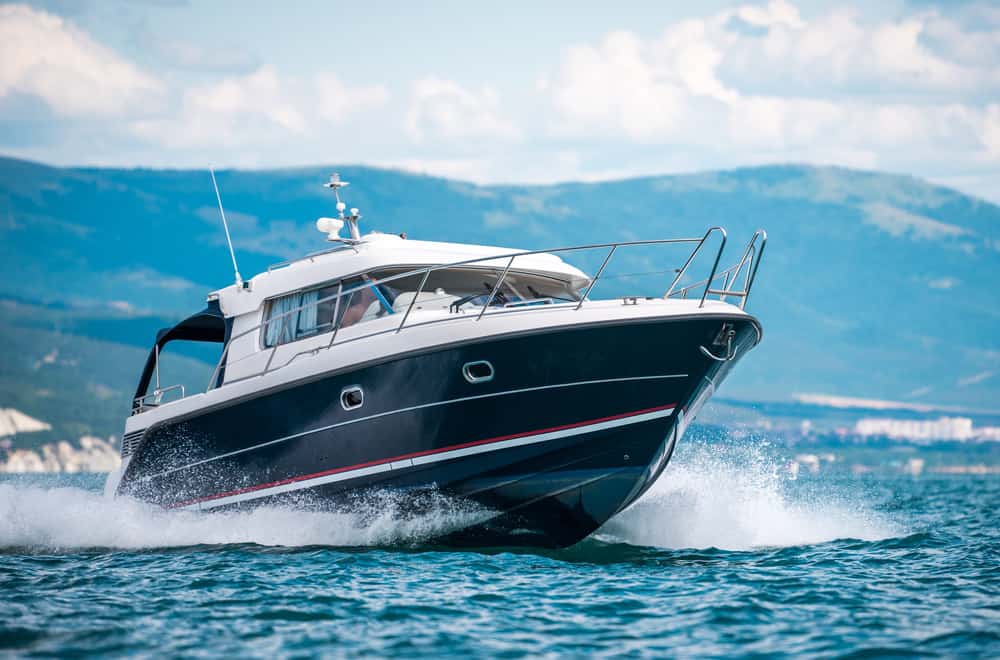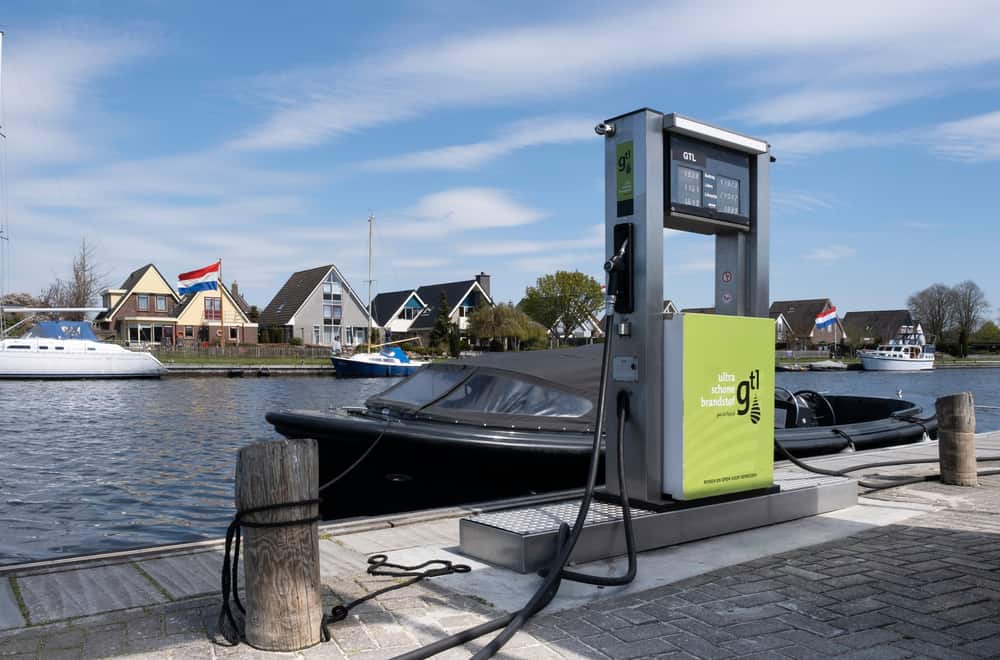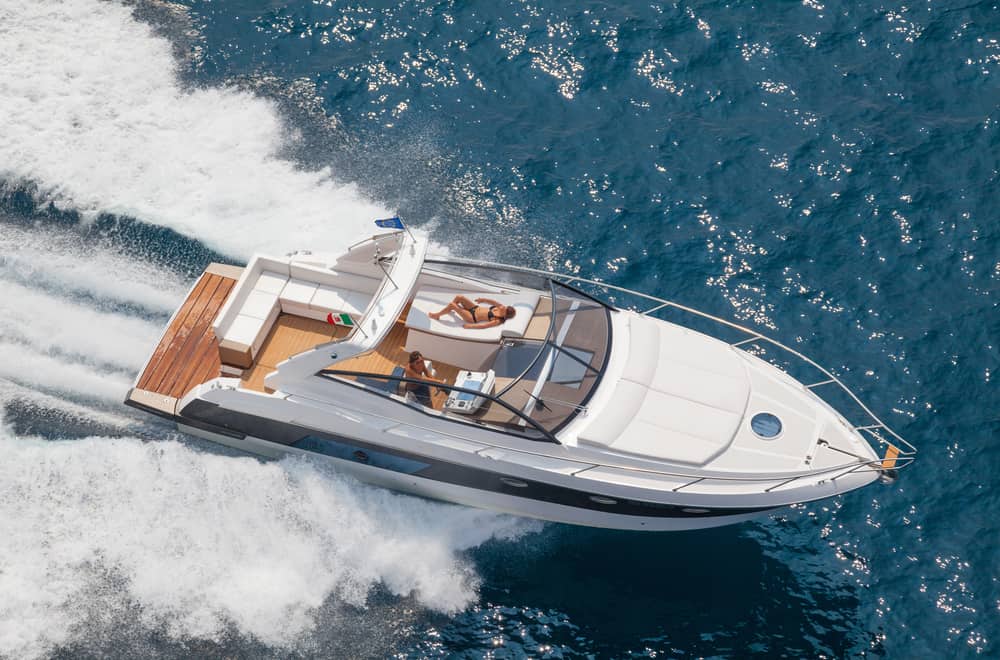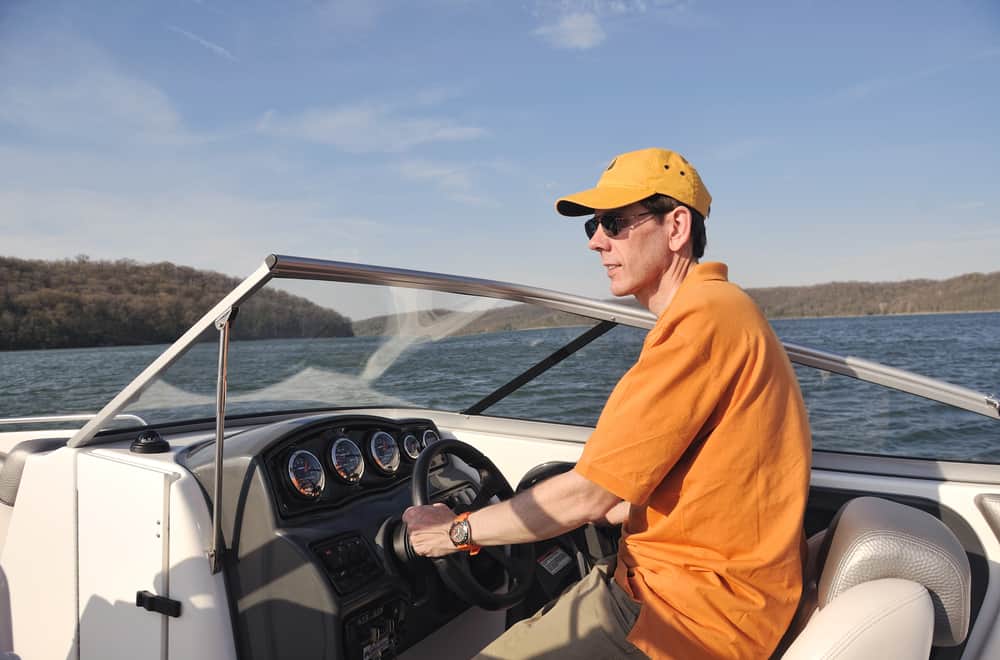One of the crucial questions new boat owners ask is how much gas do boats use. There is no simple answer since every boat type spends a different gas amount per boating hour, depending on its model, size, speed, and many other factors.
For instance, a small watercraft boat will need 3 to 8 gallons per hour at cruising speeds. On the other hand, an average motorboat uses at least 20 to 30 gallons per hour. The best option is to consider all relevant factors and make a precise calculation. Let’s see.
Table of Contents
Factors Impacting the Gas Consumption
Most boat types can travel 5 to 30 miles on a tank of gas, but numerous things will affect the final distance you can reach.
Therefore, it is essential to understand how your boat works and recognize factors that impact its fuel consumption. Only that way, you can precisely calculate your budget and enjoy sailing without worries.
1. Average boat MPG
The first thing to do when you want to determine the fuel efficiency is to check the average boat MPG (miles per gallon). An average boat will need 1 to 4 gallons per mile at a speed of 20 knots, but many other factors impact gas consumption.
Your best shot is to calculate the boat speed and amount of gallon it spends. For instance, if your boat burns 10 gallons (37.8 l) of fuel per hour while moving 20 nautical miles per hour, it will go approximately 2 miles per gallon.
2. Boat type
It is the most critical factor determining fuel consumption since each boat type consumes gas differently.
-
Motorboat
A fast motorboat typically uses 20 to 30 gallons per hour, but the gas consumption will depend on its type, conditions, and speed. Be prepared that such a vessel needs the most gas, so it is the most expensive option at your disposal.
-
Fishing boat
On average, a fishing boat will get 2 mpg at max RPMs. However, its mileage will vary from 1 to 4 mpg, depending on the RPMs, engine type, and weather conditions while sailing.
Fishing boat |
||
| Boat model | Engine type | Miles per gallon* |
| Boston whaler 190 outrage | Mercury | 3.5 |
| Tidewater 2110 bay | Yamaha | 3.5 |
| Triton 240 LTS | Yamaha | 2.2 |
| Sea hunt gamefish 25 | Yamaha | 1.4 |
| Boston whaler 230 outrage | Yamaha | 1 |
| Pro-Line 23 sport | Suzuki | 1.8 |
| Seavee 290 | Twin Suzuki | 1.6 |
| Pathfinder 2400 trs | Honda | 2 |
| Judge 27 Chesapeake | Honda | 1.5 |
| Regulator 23 | Twin | 1.1 |
*At full throttle
-
Small watercraft
The rule of thumb is that a small boat, like a sailboat or skiff, always consumes less gas than a bigger one. You can expect your watercraft to spend 3 to 8 gallons of fuel per hour.
This boat type is not fuel-efficient since it is sizable and heavy, plus it takes strong power to push two tubes through the water. Therefore, you should count on 5 gallons per hour to spend while sailing, but some old, poorly maintained boats often need up to 25 gallons per hour.
Pontoon boat |
||
| Boat model | Engine type | Miles per gallon* |
| Qwest 818 adventure cruise | Yamaha | 7.5 |
| Sunchaser 818 oasis cruise | Yamaha | 6.7 |
| Avalon Catalina 2185 CR | Yamaha | 3.2 |
| Bentley 243 | Yamaha | 2.6 |
| Bennington 25 RTSB | Yamaha | 1.5 |
| Crestliner 200 sprint | Mercury | 3.1 |
| Barletta C22QC | Mercury | 2.4 |
| Avalon Catalina 2385 SQL | Mercury | 2.4 |
| Avalon Catalina 2585 QL | Mercury | 2 |
| Barletta L25UC | Mercury | 1.3 |
*At full throttle
-
Bass boat
The primary purpose of an elegant bass boat is fishing, but its powerful fuel-injected engine requires high gas consumption. If you enjoy this boat type, you should count on 4 to 5 gallons per hour that your vessel will spend at cruising speed.
Most bass boats spend 4 mpg at max RPMs, but the mileage may vary from 5 to 7 mpg, depending on its weight and condition, engine type, and weather conditions.
Bass boat |
||
| Boat model | Engine type | Miles per gallon* |
| Nitro Z21 | Yamaha | 7.7 |
| Alumacraft escape 145 CS | Yamaha | 7.5 |
| Tidewater 1672 Skiff | Yamaha | 6.7 |
| Crestliner 1600 Storm | Mercury | 7.6 |
| SmokerCraft 17 Excursion | Mercury | 4.6 |
*At full throttle
This light boat typically uses 3 to 6 gallons per hour, but the final gas consumption will depend on the engine type, boat length, and maintenance levels.
Some models longer than 20 feet (6 m) require 5 to 6 gallons of gas per hour at speeds of 20 knots.
-
Cabin cruiser boat
A cabin cruiser boat requires more gas, so you should be prepared to reach 0.5 to 2 miles per gallon. However, you can use it for long-term travel thanks to its large fuel tank. Remember that careful cruising and proper maintenance significantly improve gas efficiency.
Cabin cruiser |
||
| Boat model | Engine type | Miles per gallon* |
| Azimut Magellano 43 | Twin Cummins | 1.6 |
| Jeanneau leader 10.5 | Yamaha | 1.3 |
| Jeanneau leader 12.5 | Yamaha | 0.6 |
| Back cove 34O | Twin Yamaha | 1 |
| Tiara 43 LE | Triple Yamaha | 1.1 |
| Chris-Craft 34 corsair | Twin Mercury | 1.2 |
| Intrepid 409 valor | Triple Mercury | 1.9 |
| Sea ray Sundancer 320 | Twin MerCruiser | 1.5 |
| Grand Banks Eastbay 44 | Twin Volvo Penta | 0.75 |
| Regal 33 express cruiser | Twin Volvo | 0.6 |
*At full throttle
-
Cuddy cabin boat
This boat will get approximately 2.5 mpg at max RPMs, but its average mileage will significantly vary, depending on its size and condition, engine type, and weather conditions.
Depending on these factors, you can expect your vessel to spend 1 to 4 mpg. In other words, you will need a boat with a 100-gallon tank for all-day cruising in most cases.
Cuddy cabin boat |
||
| Boat model | Engine type | Miles per gallon* |
| Stingray 225cr | I/O 240 HP | 3.4 |
| Stingray 250cr | Volvo Penta | 2.8 |
| Crown line 264 cr | Yamaha | 2.8 |
| 22 Sea hunt | Yamaha | 2.64 |
| Rinker 22MTX | Yamaha | 2.4 |
| 20 Proline hardtop | Mercury | 1.9 |
| Bayliner VR5 | Mercruiser | 2.6 |
| Rinker 29QX | Mercruiser | 2.2 |
| Pursuit 2460 Denali | Mercruiser | 1.2 |
| Pursuit 2860 Denali | Twin 4.3l EFI Merc’s | 1 |
*At full throttle
-
Bowrider boat
This boat type with enough space for seating will commonly get about 3 miles per gallon of gas. However, it will vary and go up to 5 miles per gallon, depending on the boat weight, number of passengers, and cruise speed.
3. Boat size
It is necessary to match the boat size with engine power. A too-small motor on a sizable vessel will significantly increase gas consumption. If you have a big boat, you should consider using multiple engines, but it will cause more fuel consumption.
- Boat weight – A heavy boat forces the engine to work more, so it will burn more fuel.
- Boat length – Remember that longboat types typically use less gas since they cut through the water much easier. The best option is to pick out the long vessel with a narrow hull.
4. Engine type
The engine power is crucial for gas consumption, so you should be aware that the motor with more horsepower uses more gas. For instance, a pontoon boat engine of 50 HP uses significantly less gas than a tritoon boat engine of 115 HP.
5. Engine maintenance and bottom condition
A poorly maintained engine always has higher gas consumption. Plus, the bottom’s paint type and its condition are vital. The clean bottom will cut through the water more smoothly, improving fuel conservation and increasing vessel speed.
6. Hull shape
Boats with V hulls use less fuel than square-shaped models.
7. Fuel type
It is crucial to follow the recommendation on fuel octane for a particular vessel since it is the best way to maximize MPG. Saving a few bucks by using cheap gas will always cost you more in the long run.
8. Weather conditions and wind
It is hard to make headway under wind and waves, or when fighting the tide, so the boat will need more fuel in this case. Be careful in such a dangerous situation to prevent using up all of the gas without moving from the place.
9. Your driving style
Driving erratically followed by frequently starting and stopping will lead to higher gas consumption. Each time you increase boat speeds, it will require more power and overwork the engine.
While constant driving at a top speed typically prolongs the total distance traveled on a full tank, going at a slow pace and stretching will cost you more.
Ways to Reduce Fuel Consumption
There are a few tips you should follow to reduce gas consumption. Let’s see.
- Pick out an appropriate boat
- Properly upgrade, tune-up, and maintain the boat engine and hull
- Adjust the speed and avoid idling and drag
- Reduce weight and avoid carrying reserve fuel, excessive water, and unnecessary wastewater when possible
- Balance the load
- Pick out a proper prop size
- Loosely set the schedule
- Use motor sail to increase the speed with reduced gas consumption
- Avoid sailing during severe weather conditions
Finally, avoid buying overpriced gas in the marina whenever possible to save some money.
Summary
The amount of fuel your boat spends significantly varies depending on many factors. Boat type, age, size, and condition, maintenance level, engine type, and average speed are crucial in most cases.
The rule of thumb is that a poorly-conditioned old boat with an inadequate engine has low fuel mileage. Therefore, you should follow a few tricks to lower gas consumption.
